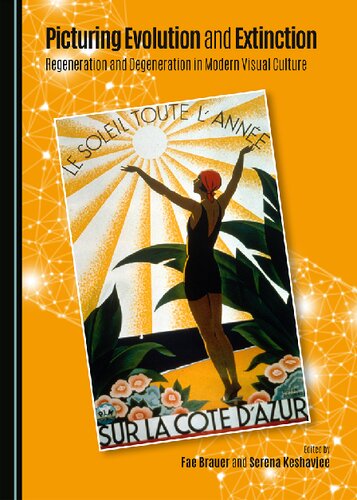Product desciption
Picturing Evolution And Extinction Regeneration And Degeneration In Modern Visual Culture Fae Brauer And Serena Keshavjee Eds by Fae Brauer And Serena Keshavjee (eds) 9781443872539, 1443872539 instant download after payment.
With the increasing loss of biological diversity in this Sixth Age of Mass Extinction, it is timely to show that devolutionary paranoia is not new, but rather stretches back to the time of Charles Darwin. The halcyon days of European industrial progress, colonial expansion and scientific revolution trumpeted from the Great Exhibition of 1851 until the Great Depression of 1929 were constantly marred by fears of rampant degeneration, depopulation, national decline, environmental devastation and racial extinction. This is demonstrated by the discourses of catastrophism charted in this book that percolated across Europe in response to the theories of Darwin and Jean Baptiste Lamarck, as well as Marcellin Berthelot, Camille Flammarion, Ernst Haeckel, Felix Le Dantec, Cesare Lombroso, Thomas Huxley, Benedite-Augustin Morel, Louis Pasteur, Elisee Reclus, Rudolf Steiner, and Wilhelm Wundt, amongst others. This book presents pioneering explorations of the interrelationship between these discourses and modern visual cultures, and the ways in which the picturing of evolution and extinction by artists as diverse as Albert Besnard, Fernand Cormon, Emile Galle, Frantisek Kupka, Pablo Picasso, Carles Mani y Roig, and Vasilii Vatagin betrayed anxieties subliminally festering over degeneration alongside latent hopes of regeneration. Following Darwin's concept of evolution as Janus-faced, the dialectical interplay of evolution and extinction alongside degeneration and regeneration is explored in modern visual cultures in Australia, America, Britain, France, Germany, Russia, Spain and Switzerland at significant spatio-temporal junctures between 1860 and 1930. By unravelling the picturing of the dread of alcoholism, cholera, dysentery, syphilis, tuberculosis, typhoid, and rabies, alongside phobias of animalism, criminality, hysteria, impotency and ecological disaster, each chapter makes an original contribution to this new field of scholarship. By locating these discourses and visual cultures within the golden age of Neo-Lamarckism, they also reveal how regeneration was pictured as the Janus-face of degeneration able to facilitate evolution through the inheritance of beneficial characteristics. In striking such an uplifting note amidst the dissonant cacophony of catastrophism, this book reveals why the art and science of Transformism proved so appealing in France as elsewhere, and why visual cultures of regeneration became as dominant in the twentieth century as the picturing of degeneration had been in the nineteenth-century. It also illuminates the paradoxical inversion that occurred in the twentieth century when devolution became equivalent to evolution for many Modernists. Hence, whilst this book opens with the picturing of indigenous people as doomed races by the first publication of Darwin's Origin of Species, it closes with the quest by 1930 for a regenerative suntan as dark as the skin of indigenous people.


